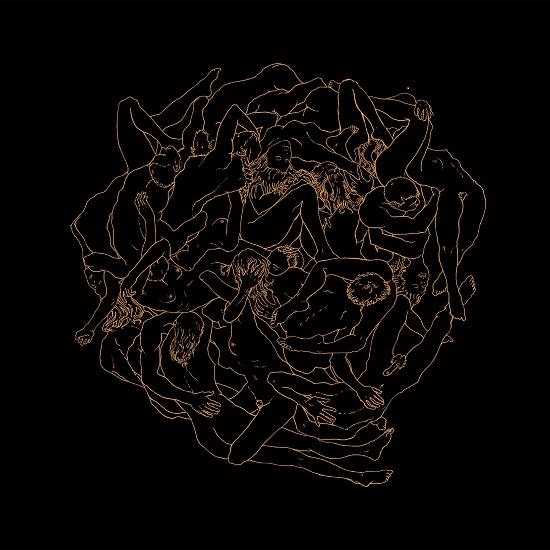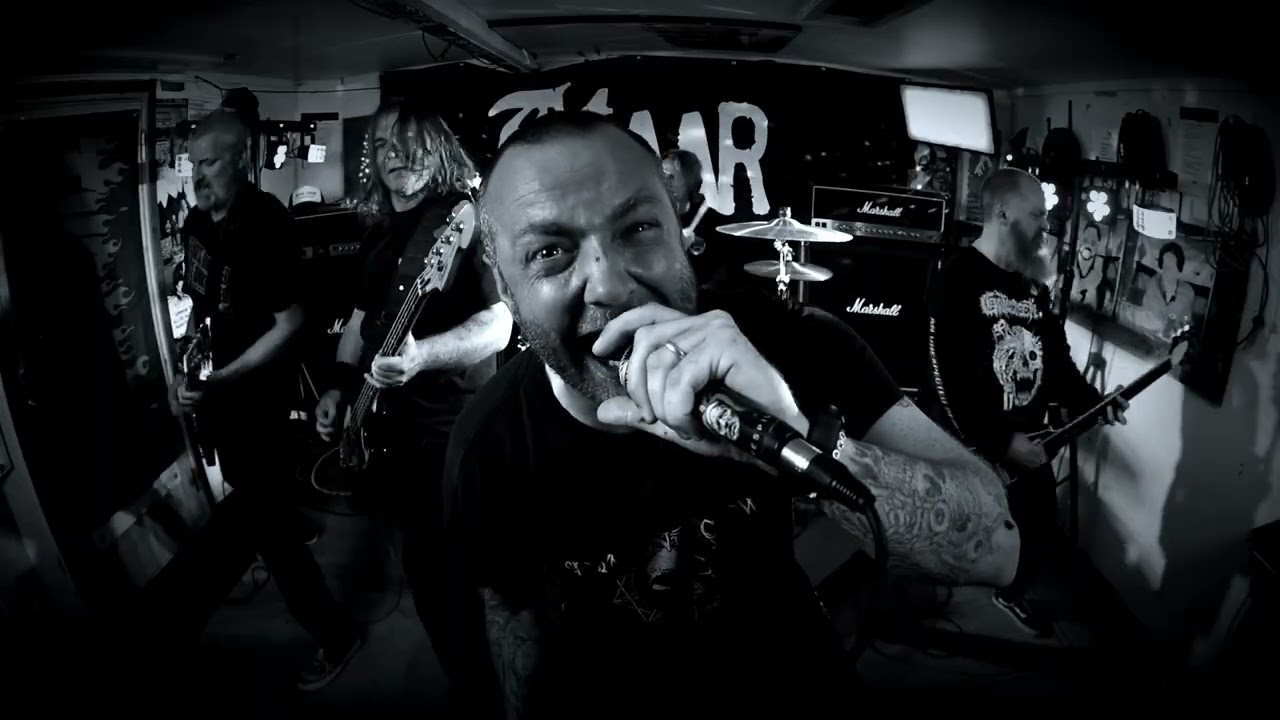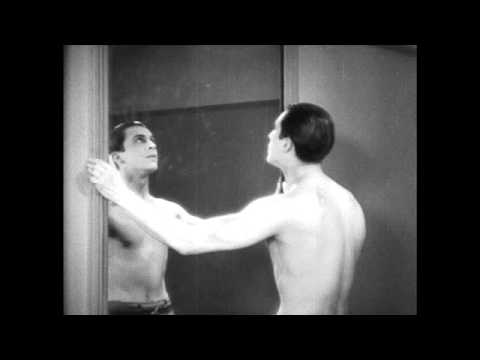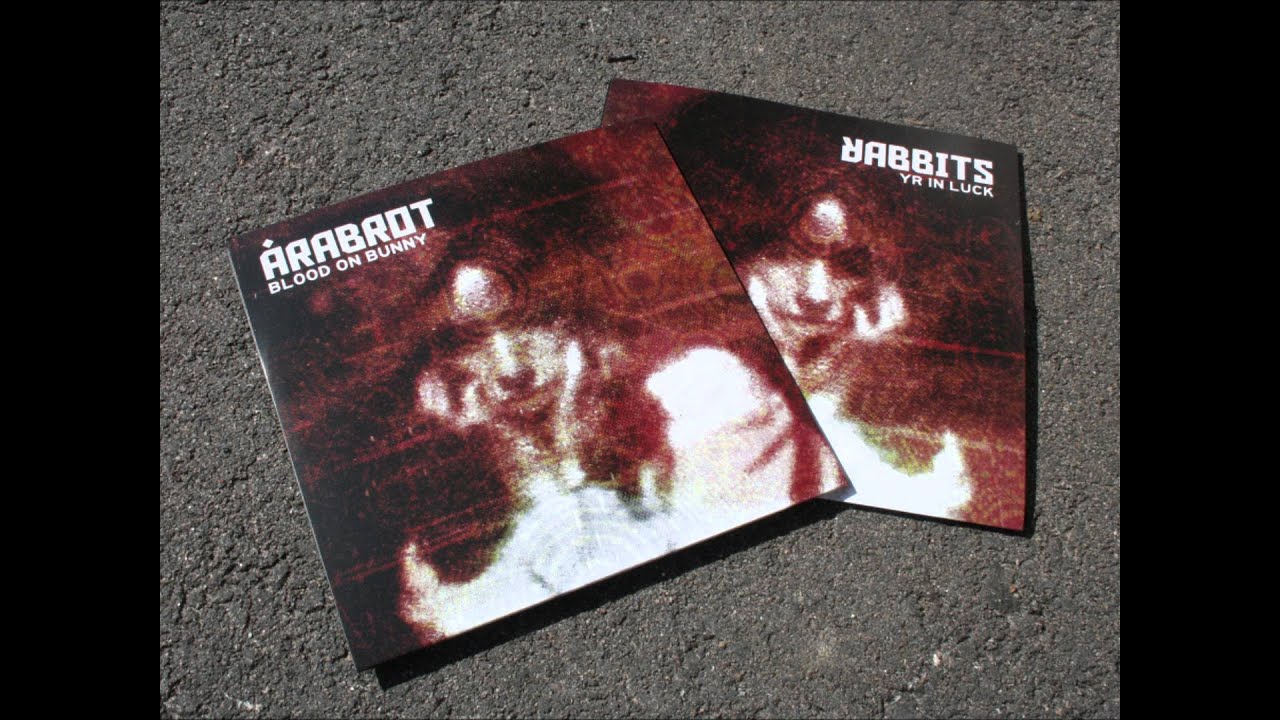Årabrot are a noise rock band from Norway. Read Joseph Burnett’s interview with them for biographical information
We had a lot of different titles for this album. Me and Kristian [Kallevik, Fysisk Format] are usually the ones who choose the name. With the change of line up before this album there were so many extra musicians participating; also the music feels like more what we were doing on the very first record. It has a very straight forward rocking feel to it. In fact it sounds a little bit like it used to when Kristian was in the band in the beginning in 2001. And with that and the fact that we were doing so much stuff abroad for the first time; going on tours and releasing records in different countries for the first time, we said, "Let’s just have a self titled album."
The band isn’t just me; it’s the Årabrot family. For example Emil Nikolaisen of Serena-Maneesh has played with us since the beginning and has played on all of our records apart from Solar Anus; he’s all over this one. He plays bass on it, he recorded it, he sings on some of the tracks. Normally we have Stian Skagen aka Concept.Virus who doesn’t play on this one but who plays on lots of our other records like ‘I Rove’. This time there is Lasse Marhaug the noise guy, someone called Erland Dahlen who is a drummer, he usually plays with bigger people like the jazz trumpeter Nils-Petter Molvaer, he is very great percussionist, so we brought in a lot of new people on this. As always I’m writing all the songs and all the lyrics and I’m organising everything, so in that sense I’m the only one in the band but otherwise we’re a big family. That is how I would describe us, as a big family. We use people who are available at the time which is important now that we are growing older. Not everyone can be available all the time to play live 150 days in the year.
1. ‘Ha-Satan Dêofol’
This actually means “Devil Devil”. There are a lot of devil titles on the album, I guess because Karin [Park, his girlfriend] and I moved to the church in Dalarna, a county in the middle of Sweden. I don’t mean all the devil stuff literally… it’s more symbolic. I started on this album a while ago. When Solar Anus came out I already had all the songs written with the exception of the lyrics. I started working on them straight after the last album came out and I worked on them for half a year. It took a whole year before we recorded it. We did the Mæsscr EP then we started recording it in January of this year. I had been debating going back to Albini – especially because of the way he records drums. I was talking to Emil about doing an album here in Oslo for a long time because he’s got a great studio called Malabar. He’s got lots of nice equipment and he gets really involved in the recording and the production and he’s done such a great job. A fantastic job. It’s a very symbolic song. It mentions the Olympic torch dying, the image of a maypole and of a crucifixion… It’s about a person who envisions all of these things happening but realising that the blood he sees on the floor is his own. They have maypoles near to where we live in Sweden but I had also been watching The Wicker Man and took a lot of lyrical inspiration from that. And crucifixion and Maypole are both two sides to the same coin. They are both Springtime symbols for the end of one cycle and the beginning of another. Where we live they will have a maypole next to the church, so there is a mix of beliefs there.
2. ‘Throwing Rocks At The Devil’
This is another devil song but perhaps this one is a little more tongue in cheek. It’s like what we explored on Solar Anus and it’s the kind of dualism that George Batailles gets into. Lots of movies have been inspiring me this time. Some books as well but mainly movies. Fernando Arrabal. Jean Cocteau. Andrei Tarkovsky – I watched everything I could by him but I think it was Ivan’s Childhood that really got to me. I think maybe some of the rawness of the album came from reading Hubert Selby Jr’s Last Exit To Brooklyn while we were recording.
3. ‘Arrabal’s Dream’
I’ve been watching a lot of films from the Panic Movement which is Fernando Arrabal, Alejandro Jodorowsky and Roland Topor – excellent movies. But this song was inspired by Arrabal’s film The Guernica Tree from 1975. I watched it and wrote the lyrics straight after. The female singer is Laura Pleasants from Kylesa. They had been on tour with Okkultokrati so she was in town and I had been looking for a female singer for a very long time…She just came in and, BAM! did it in one take. She is great. My own vocals are different on every track and this is mainly by coincidence but I will admit that I’m trying to sing more these days. On the early albums it’s basically just screaming and everything was just one take, trying to get it down as quickly as possible with as much aggression as possible. Nowadays I’m trying to work more on the songs and to develop the vocals and the lyrics as much as possible. It’s a bigger part of the picture these days.
4. ‘Blood On The Poet’
Lyrically this was inspired by Jean Cocteau and his 1930 film The Blood Of The Poet. It’s a fantastic film, very surrealistic. It’s basically about a guy walking down a strange corridor – and this is what I had in mind when I was writing the lyrics – and it’s kind of tilted so he’s walking on the walls. He’s trying to open the doors but he can’t so he’s peering through the keyholes into these weird scenarios going on inside each room. And then he smashes through this mirror, which is like a pool, into a different reality.
5. ‘Dedication’
There is a French surrealist called Robert Desnos who wrote a poem called ‘Death: The Oaken Rampart’ which is great. He dedicates his death to his former lovers. It’s a very short poem, two pages. And recently I was also reading about Lee Miller, she was a photographer who used to hang out with Man Ray but she was also a war correspondent and there is a picture of her in Adolf Hitler’s bathtub, which she took herself. So it was Desnos’ dedication of his death and Lee Miller that I was thinking of when I wrote this. There is perhaps less electronic noise on this album than you would expect but nearly all of it is made by Mr Noise himself… Lasse Marhaug. He has been around for many, many years. He’s made records with SunnO))), with Merzbow… anyone you care to mention. He is fantastic. Me and Emil did a little bit of electronics using a MOOG Taurus but after that, the rest of the noise and atmospheric stuff is made by the percussionist Erland Dahlen.
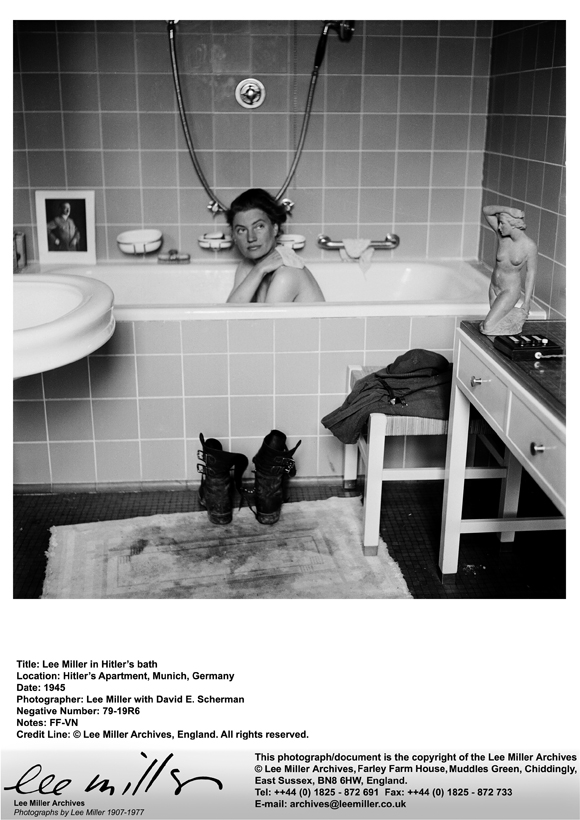
6. ‘Blood On Bunny’
It’s revengeful. Ex-wives man. [laughs] Actually, the church where we live, it was still an actual functioning church when we moved in to the priest’s quarters. There were only a few congregants still using the church because they were all too old… they were dying out. And at the last meeting they had they brought in this guy, a younger priest with long, coke style finger nails, like Harvey Keitel in Taxi Driver. He was telling these Biblical stories but in a really modern way but the only people in the church were these old people having to turn up their hearing aids to hear him so you could hear the feedback. And when they could hear him, they disagreed with his modern way. All of his stories about Abraham in the desert – screwing the cleaning lady [Hagar, Abraham’s slave who bore his children because his wife Sarah was barren, Old Testament Ed] – interested me though. So I mixed all this up with an idea of revenge on a former lover or a love affair going wrong. We lived in the priest’s office for a year before the church was deconsecrated last September. The Church is very old and enormous and still has the church organ which is cool but the part where we actually live – the old quarters – is actually quite normal with a kitchen and so on.
7. ‘Drawing Down The Moon’
The artwork was done by Johannes Høie More, the Norwegian artist who has done a lot of stuff for Fysisk. He’s great. He knows what I’m thinking. We sit down and talk a lot. He knew exactly what we wanted so he made this Vigeland inspired circle, you can see that it’s inspired by Gustav Vigeland. I bought a book, The Witches’ Bible before I wrote this song. So you have a the main lyrics which is from the point of view of a guy declaring love to his girlfriend but then underneath that you have someone muttering so you can’t really hear it, verses from the Witches Bible. And they sound very similar. The title is from Crowley. Yeah, so it’s kind of like a nice song but then it isn’t really at all!
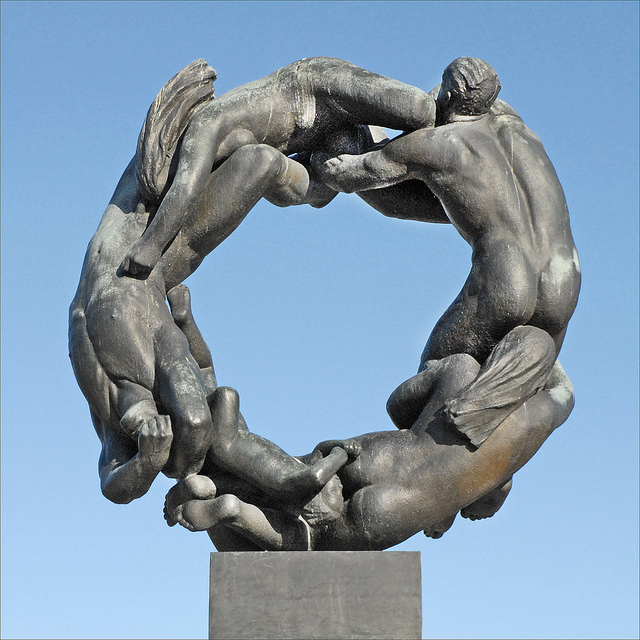
Detail from Frogner Park, sculpte by Gustav Vigeland
8. ‘The Horns Of The Devil Grow’
The horns of the devil growing is a way of saying that there is trouble brewing. And it is a feeling I’ve felt in this town [Oslo] for a while. It’s sort of a nice place but there’s a sensation of some trouble… something bad is going to happen. Some bullshit. It’s not about Armageddon. It’s not about social trouble or religion. It’s not about politics because I try and avoid all of that stuff. It’s so easy to fall into the trap of being “political”. That’s not what the band is about. It’s more about aesthetics than politics. This is more about the intimation of trouble. This is the first album I’ve made without Vidar on drums [who left to join Deathcrush a year ago]. When you’re in a noise rock band for 12 years and all you do is travel around, it’s so tiring. There’s so much bullshit you have to put up with, no money, travel and bad shows. And in the end people grow tired of doing it and I absolutely understand that. But there’s an extra gear. Karin’s got it and I have it too: this extra gear which you can switch into to keep on going. I mean how long do bands last for? Maybe seven or eight years, ten tops and then they go on hiatus or only release an album every five years or whatever. So I can understand when people run out of energy to do it any more. Karin’s brother [David Park] played drums on this record. My drummer at the moment is Magnus who used to play bass live for us, because he is an excellent drummer. He’ll probably play drums on future records.
9. The Bitter Tears Of Könt
I was writing this song a long time ago when I was waiting in a pub in Camden. And I had this vision of the Arabic part of Africa where it borders the Sahara. It was a warm day in London, very sunny. And this erotic sort of feel to the desert came to me. In fact I didn’t actually write it as lyrics, I wrote it as a text for a book or whatever. But then when I wrote this riff which kept on going and going and going and made me think of a whirlwind of noise, I put them together. It’s almost like the idea of one of those bands like Sleep or High On Fire, marching through a desert.
10. Mænads
This is quite different to all the other songs. It features a pump organ, a harmonium, Karin on piano and Lasse Marhaug’s noise, as well as guitars and bass. The Mænads were the ancient Greek followers of Dionysus, so it’s about an orgy. It’s like La Grand Bouffe, the film where those men eat themselves to death. But it is about an old Greek style orgy with wine and food and female followers who rave and go wild. They go crazy. They would be very strong women I guess.
Årabrot is out today on Fysisk Format

